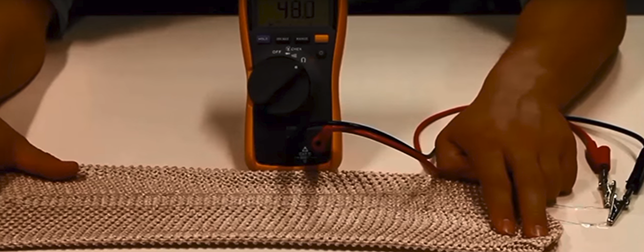The researchers at the Ecole Polytechnique Federale le Lausanne (EPFL), in Switzerland, have developed a smart fiber that is capable of sensing tiny changes in pressure and strain that are placed on it. The researchers believe the technology could be applied for the development of new kinds of sensors and for producing smart clothing that can detect breathing, heart beats, and other health parameters.
“We developed a simple method to fabricate elastic fibers, fibers that are very soft and that can also integrate variety of materials. That can be electrodes, that can be optical materials that can guide lights. Some can respond to strain, some can respond to torsion, to pressure to shear,” said Fabien Sorin from the Laboratory of Photonic Materials and Fiber Devices.
Read more Combining Wearable Tech and AI Could Help Predict Onset of Diseases
“The main innovation that we’re showing in our study is that this process used to be applied to glasses and thermoplastics. Now we found a new selection criteria to apply it to thermoplastic elastic, which are materials that are very soft, that can be deformed.”
The fiber threads are exceptionally flexible and elastic, made of an elastomer within which electrodes and other small materials and devices can be fairly easily integrated.

To make the fibers, the researchers used the same process that is used to make optical fibers. They started with a microscopic preform that was built at a centimeter scale. That’s where they organized all the materials they wanted in the proper positions and at the right scale. They heated up this preform; the materials became soft and then they pulled on them.
The EPFL team has already built the threads into robotic fingers and clothes to make them considerably “smarter” than their old conventional versions.
Read more This ‘OLED Patch’ Will Heal Your Wounds Anywhere and Any Time
“So, in this study we are the source of the application, we collaborated with Brokk that makes large scale robots, and we integrated one of our fibers on the finger of this robots so that it can follow the deformation of the finger and that could also have a pressure sensor on the tip of the finger so we know when a pressure is applied to an object,” Sorin said.
This fibers can also be integrated into textiles so this could be very useful for a variety of medical applications like soft prosthesis.
We can also think of more fun applications like having a keyboard integrated into a textile so that you can text your friend while typing on your shirt.
“So the general idea is that we have new way to integrate variety of materials within thin stretchable fibers, so you can think of applying them in engineering applications, stretchable electronics, stretchable photonics…the application field is really wide,” Sorin concluded.












